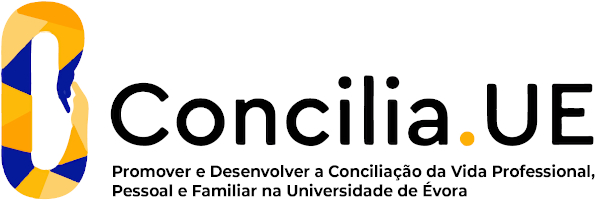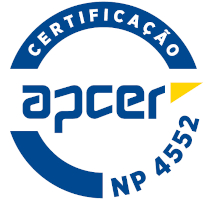2024
Engineering Mechanics II
Name: Engineering Mechanics II
Code: EME13007L
6 ECTS
Duration: 15 weeks/156 hours
Scientific Area:
Mechanical Engineering
Teaching languages: Portuguese
Languages of tutoring support: Portuguese, English
Regime de Frequência: Presencial
Sustainable Development Goals
Learning Goals
Provide the concepts of Mechanics and an introduction to its application in engineering, in the description, modelling and analysis of mechanical systems comprised of rigid bodies in dynamic situations.
Capabilities to be developed:
(a) apply the axioms of Mechanics and mathematical tools in the development and analysis of mathematical models of mechanical systems;
(b) write the equations of motion for particles and rigid bodies in 2D and 3D;
(c) describe the motion of planar mechanical systems idealizing its components as rigid bodies;
(d) introduce numerical algorithms and computational tools in the solution of the equations of motion and in the analysis of mechanical systems;
(e) develop abstraction, reasoning and assessment skills in connection with the subject matters and tools acquired from former course units.
Capabilities to be developed:
(a) apply the axioms of Mechanics and mathematical tools in the development and analysis of mathematical models of mechanical systems;
(b) write the equations of motion for particles and rigid bodies in 2D and 3D;
(c) describe the motion of planar mechanical systems idealizing its components as rigid bodies;
(d) introduce numerical algorithms and computational tools in the solution of the equations of motion and in the analysis of mechanical systems;
(e) develop abstraction, reasoning and assessment skills in connection with the subject matters and tools acquired from former course units.
Contents
1. Revisions of kinematics and kinetics of particles. Equations of motion in different coordinate systems. Numerical solutions of ordinary differential equations.
2. Kinematics of rigid bodies in 2D and 3D. Frames of reference in motion. Planar mechanisms, kinematic joints and constraint equations. Numerical solution of systems of nonlinear equations.
3. Motion of a continuum body, deformation gradient, polar decomposition, deformation and rotation. The axioms of conservation of mass, linear momentum, angular momentum and conservation of energy. Application to a rigid body. Centre of mass, inertia tensor.
4. Kinetics of rigid bodies and mechanical systems in planar motion.
5. Applications of the conservation of energy and impulse and momentum principles.
6. Kinetics of rigid bodies in 3D. Motion of a gyroscope.
7. Introduction to the dynamical analysis of mechanical system using a computer program. Applications to robotics and attitude mechanics in aerospace systems.
2. Kinematics of rigid bodies in 2D and 3D. Frames of reference in motion. Planar mechanisms, kinematic joints and constraint equations. Numerical solution of systems of nonlinear equations.
3. Motion of a continuum body, deformation gradient, polar decomposition, deformation and rotation. The axioms of conservation of mass, linear momentum, angular momentum and conservation of energy. Application to a rigid body. Centre of mass, inertia tensor.
4. Kinetics of rigid bodies and mechanical systems in planar motion.
5. Applications of the conservation of energy and impulse and momentum principles.
6. Kinetics of rigid bodies in 3D. Motion of a gyroscope.
7. Introduction to the dynamical analysis of mechanical system using a computer program. Applications to robotics and attitude mechanics in aerospace systems.
Teaching Methods
Teaching consists of weekly two hour lectures (theoretical classes) where the course contents are exposed and explained, using examples of application. In addition there are two hour recitations (theoretical-practical classes) where problems are solved using the learned concepts. Two hour tutoring per instructor is weekly available outside classes during all the semester.
The students assessment consists of three written tests [T_i] made along the semester (the date for the last one coincides with the first exam) or a final exam [E_j] (two dates available), and three assignments [A_k], mainly computational with the possibility of an experimental part. All elements are marked in the range [0, 20]. There is a minimum mark of 9.0 for any T_i ou E_j.
The final grade [NF] is given by:
N = 0.7 * max((T1+T2+T3)/3 , E1, E2) + 0.3 * (A1+A2+A3)/3;
if (T1 and T2 and T3 or E1 or E2)>= 9.0 then NF = N
else NF = min(N, 9.0);
The student is approved if NF>= 9.5.
The students assessment consists of three written tests [T_i] made along the semester (the date for the last one coincides with the first exam) or a final exam [E_j] (two dates available), and three assignments [A_k], mainly computational with the possibility of an experimental part. All elements are marked in the range [0, 20]. There is a minimum mark of 9.0 for any T_i ou E_j.
The final grade [NF] is given by:
N = 0.7 * max((T1+T2+T3)/3 , E1, E2) + 0.3 * (A1+A2+A3)/3;
if (T1 and T2 and T3 or E1 or E2)>= 9.0 then NF = N
else NF = min(N, 9.0);
The student is approved if NF>= 9.5.
Teaching Staff
- Gonçalo Nuno Guerreiro de Jesus Silva [responsible]





















